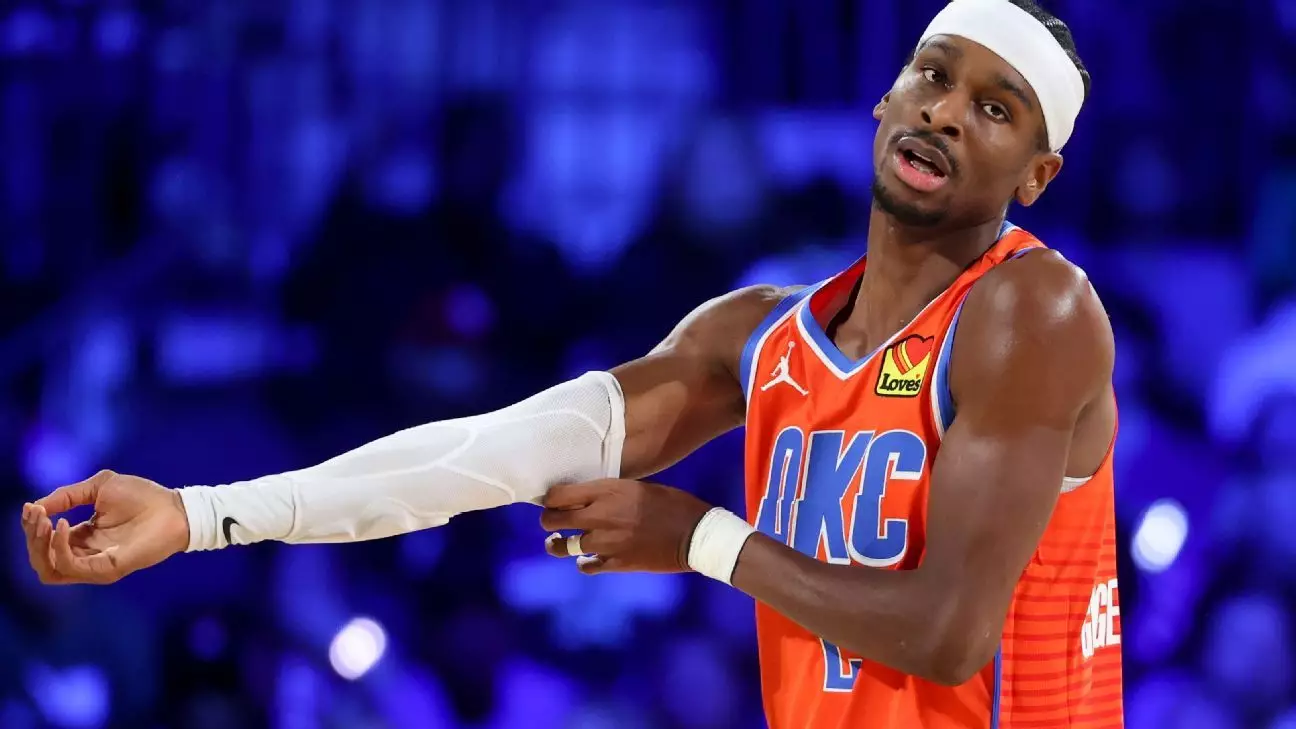The Oklahoma City Thunder’s performance in the recent NBA Cup final against the Milwaukee Bucks was far from ideal. With a final score of 97-81, Oklahoma City recorded one of their poorest offensive outings of the season. This article explores the critical aspects of their performance, identifying the issues that plagued the team and evaluating what can be learned from such a defeat.
The Thunder’s lack of offensive efficiency was glaring, as they recorded season lows with only 81 points and a woeful field goal percentage of 33.7%. Their struggles were particularly pronounced from beyond the arc, where they managed a dismal 15.6% shooting rate. Coach Mark Daigneault expressed disappointment but also a sense of learning opportunity, highlighting that while players missed shots, there were moments he could have managed more effectively. This recognition underscores a critical element for development: the necessity of holistic improvement beyond just player execution.
Shai Gilgeous-Alexander, typically the driving force for the Thunder, experienced an uncharacteristically off night with 21 points on 8-of-24 shooting. Despite the diminished output, he maintained composure, attributing some inefficiency to the night itself rather than solely the Bucks’ defense. His openness about the experience reflects a maturity and understanding that every player goes through rough patches. This is a valuable attitude not only for him but also for the team’s mental resilience as they navigate the challenges of a long season.
Three-Point Shooting Woes
Shooting from three-point range proved to be a significant Achilles’ heel for the Thunder. While their expected three-point shooting percentage was 34.9%, the team fell drastically short, finishing with just five made three-pointers out of 32 attempts. This stark contrast sheds light on the importance of converting open looks, especially against high-quality defensive teams like the Bucks, who capitalize on opponents’ missed opportunities. Jalen Williams, a key contributor with 18 points, hinted at the need for consistency in generating good looks and making timely shots, illustrating the team’s struggle to avoid distractions during a tough game.
Defensive Efforts Hampered by Offensive Lapses
Interestingly, the Thunder’s defense during the contest was not entirely to blame, as they managed to create a solid defensive structure against Milwaukee. However, as the game progressed, their inability to convert on offense weakened their overall performance. Isaiah Hartenstein’s solid first-half contribution was overshadowed by a significant drop-off in offensive production, particularly in the second half where the team managed to score a mere 31 points. Analysis indicates that while they were aggressive early on, the Thunder’s consistent failure to adjust their offensive strategy contributed to a lack of scoring in the paint.
Lessons for Future Engagements
Losses like this can serve as critical learning experiences. Coach Daigneault and the Thunder must analyze this game closely to understand the interplay between their offensive and defensive units. As the team learns to navigate these challenging moments, they can glean valuable insights on executing under pressure and adapting their game plan. Moving forward, maintaining confidence in shooter’s abilities while also fostering an adaptable response to defensive adjustments will be key for the Thunder.
While the Oklahoma City Thunder faced a disappointing defeat in the NBA Cup final, it presents an opportunity for growth and development. The elements of offensive inefficiency, struggling star performances, and the inability to adjust during the game encapsulate the challenges that can arise in high-stakes contests. As they process this experience, the Thunder have the chance to emerge more resilient, demonstrating that every setback can ultimately lay the groundwork for future success.

